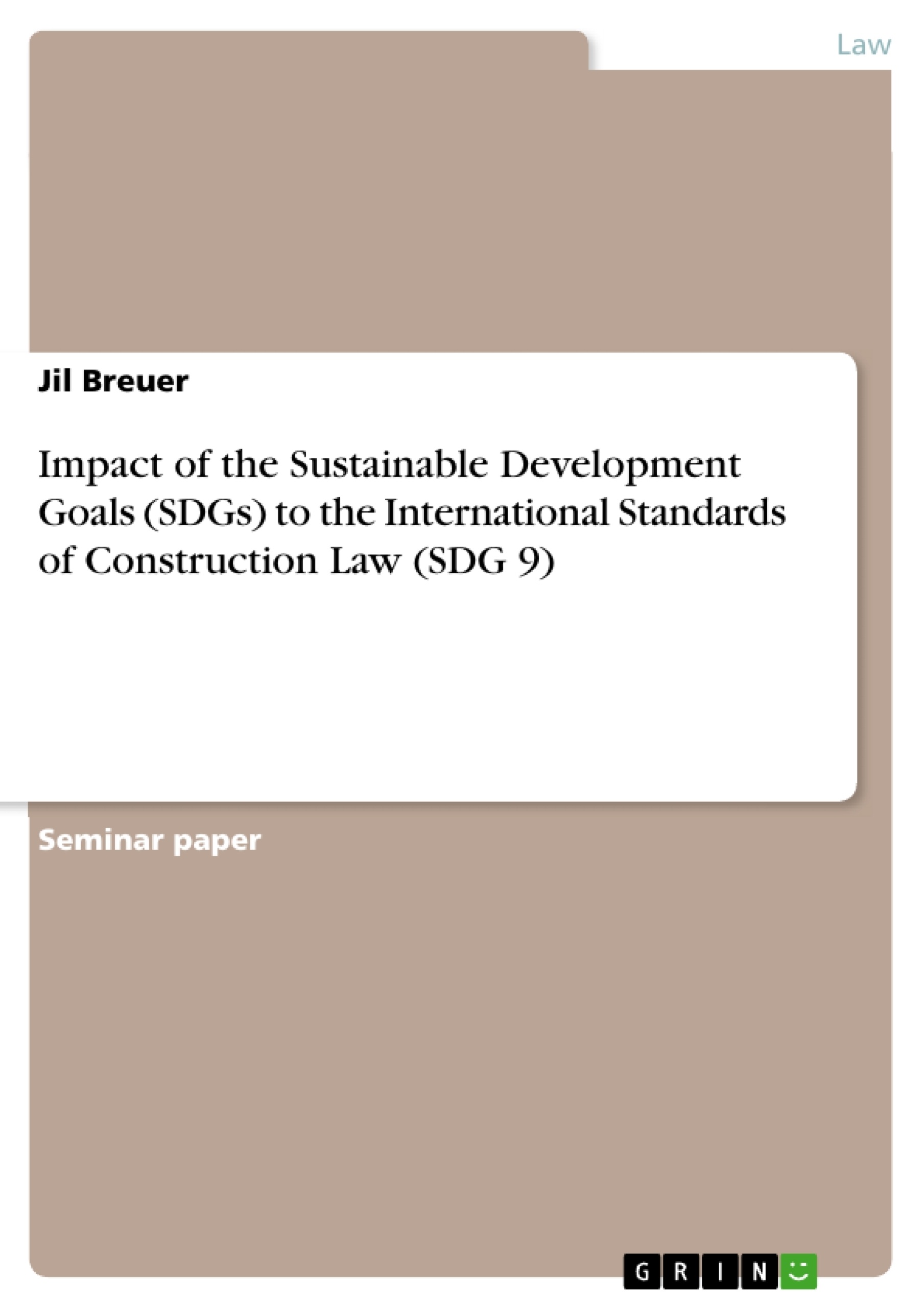This paper deals with the impacts of the Sustainable Development Goals to the international standards of construction law. At first, the paper will give an overview about the nature of construction contracts and will describe two common forms of contracts: the International Federation of Consulting Engineers and the New Engineering Contract. In addition, there will be a description of the Sustainable Development Goals, especially about the Sustainable Development Goal 9: Built resilient infrastructure, promote inclusive and sustainable industrialization and foster innovation.
Then, the paper deals with how the Sustainable Development Goals can be implemented in the construction industry and what framework is needed. Moreover there will be an example of the Bechtel Company, which already implemented sustainability in their construction projects and thus should be role model for other companies. In the end there will be a conclusion outlining how the construction industry has changed because of the United Nations 2030 Agenda.
Inhaltsverzeichnis (Table of Contents)
- Introduction
- International Construction Law
- The nature of construction contracts
- International contract forms
- FIDIC
- New Engineering Contract
- The 2030 Agenda for Sustainable Development
- Sustainable Development Goals
- Goal Nr. 9: Industry, innovation and infrastructure
- Sustainability in the construction sector
- Implementations of the SDGs in the construction industry
- Bechtel as example for sustainable construction
- Conclusion
Zielsetzung und Themenschwerpunkte (Objectives and Key Themes)
This paper aims to analyze the impact of the Sustainable Development Goals on international standards of construction law, particularly focusing on SDG 9: Industry, Innovation and Infrastructure. It explores the nature of construction contracts, examines prominent international contract forms like FIDIC and NEC, and discusses the integration of sustainability principles within the construction sector.
- The nature of construction contracts and their unique characteristics
- The role of international contract forms like FIDIC and NEC in construction projects
- The significance of the Sustainable Development Goals, particularly SDG 9, for the construction industry
- Strategies and frameworks for implementing sustainable practices within construction projects
- Examples of companies, such as Bechtel, that have successfully integrated sustainability into their operations
Zusammenfassung der Kapitel (Chapter Summaries)
- Introduction: The paper introduces the concept of sustainable development in the construction industry and highlights its relevance due to the industry's impact on the environment. The paper outlines its scope, focusing on the impact of the Sustainable Development Goals (SDGs) on international construction law standards.
- International Construction Law: This chapter delves into the nature of construction contracts, emphasizing their complexity and the need for careful risk allocation. It introduces two common international contract forms: the International Federation of Consulting Engineers (FIDIC) and the New Engineering Contract (NEC), highlighting their importance in facilitating international construction projects.
- The 2030 Agenda for Sustainable Development: This chapter explores the broader context of the SDGs, particularly focusing on SDG 9: Industry, Innovation and Infrastructure. It examines the goal's relevance to the construction industry and its potential to drive sustainable development.
- Sustainability in the Construction Sector: This chapter examines the integration of SDGs in the construction industry, outlining frameworks and strategies for implementing sustainable practices. It presents Bechtel as an example of a company that has successfully incorporated sustainability into its construction projects, highlighting their practices as a potential model for other companies.
Schlüsselwörter (Keywords)
This paper revolves around key themes and concepts, such as international construction law, sustainable development, the Sustainable Development Goals, particularly SDG 9, international contract forms (FIDIC, NEC), risk allocation, and sustainability practices in the construction industry.
- Citar trabajo
- Jil Breuer (Autor), 2018, Impact of the Sustainable Development Goals (SDGs) to the International Standards of Construction Law (SDG 9), Múnich, GRIN Verlag, https://www.grin.com/document/451951



